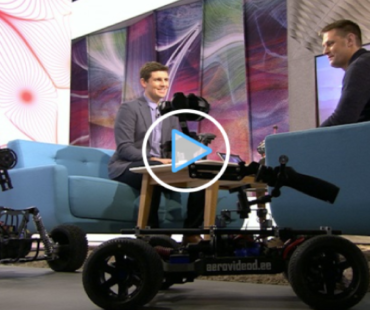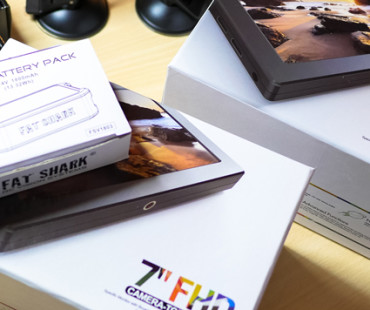A multicopter is not a toy.
The safety instructions are intended not only for the protection of the aircraft, but also to protect your own safety or others. Improper operation can cause serious injury and property damage. We do not guarantee error-free behavior of the electronics or software. Despite careful preparation and review, we do not assume any warranty or liability (direct or indirect) for the accuracy of the software, hardware or information. Use the electronics at your own risk (this also applies to associated computer programs). Furthermore, we assume no liability for consequential damage to property or persons caused by the application. It is your responsibility to perform a full system test. In case of improper use a multicopter can be dangerous. Do not fly over people! You need an appropriate insurance before the first flight, as required by law in many countries!
Generally
… multicopter is not a toy and it´s not suitable for children under 14 years. If you don’t have sufficient knowledge about the control of a model aircraft, please contact someone with experience.
An appropriate (model aircraft) liability insurance is required. In general, model aircraft are not covered by a standard liability insurance.
Before starting
- Check the reliability of the multicopter.
- The flight battery and transmitter battery must be fully charged.
- Always turn on the transmitter first and then the multicopter. Watch for visible damage such as loose screws, broken, unbalanced or damaged propellers, faulty connectors or solder joints, broken pipes, etc.
- The propeller must be in a good condition and securely mounted. The rotors must spin smoothly. Please ensure that there are no objects are in the rotational plane of the propellers or within a distance that poses a risk of obstruction. Rotating propeller ends are dangerous to touch – never touch a rotating propeller with fingers or other body parts.
- Ensure the appropriate to the audible beeps when auto lipo-detection is enabled. 4 * beep means 4s Lipo
- Ensure that the selected channel on the remote control is free and that you’re within range of the transmitter.
- Ensure the sensors are calibrated (when the motors are off move yaw and gas stick into upper left corner until it beeps).
- Different settings can result in fundamentally different flight characteristics and occupation of the Channel functions. Make sure that you are familiar with the setting and its features.
- After starting the motors, check that all motors are running and rotate evenly. Please fly carefully at a low altitude until you know that everything is working fine.
- Perform a pre-flight check (see checklist below).
- Start manually – switch off altitude control and GPS.
During the flight
- Do not take risks! Your own safety and that of your environment depend on the good behavior of the pilot. Always maintain a safe distance from people, animals and objects. Improper operation can cause serious injury and property damage! Never fly towards viewers and avoid flying over spectators.
- Keep in mind that viewers could get close to the multicopter, without being aware of potential dangers.
- Always turn off the multicopter first and disconnect the flight battery before turning off the transmitter.
- Only fly in sight. In the case of manual control, you must be able to see the position and attitude.
- Never rely 100% on functions such as GPS, compass, or altitude control. You must always be able to take manual control of the multicopter.
- Reduce the gas or switch off the motors in case of a crash or failure.
- Do not fly in blocked air space, such as in the vicinity of airports, etc.
- Pay attention to under-voltage warning -flying on an empty battery can cause damage to the Lipos and crash.
- If a defect or malfunction has occurred, it must be corrected before the next start.
- When using GPS, take note that the position of the multicopter can change suddenly some meters.
After the flight
- Disconnect the battery and check all over for damage. Make sure that there is no damage to the propellers.
- See the Handling and safety precautions of Lipos.
- After a crash the sensors and electronics might be damaged. Before the next start everything must be checked.
Checklist (pre-flight check)
- Weather conditions suitable (Beginners are advised to fly in conditions less than 15kts).
- Frame and all screws are tight.
- Propeller not damaged and tightly fixed.
- Battery fully charged and securely mounted.
- Transmitter battery charged and the antennas are free.
- Channel of the transmitter is not busy. If 35/40/70MHz or other MHz-RC-controls are in operation simultaneously, the used channels must be checked with the other pilots (not necessary for 2.4 GHz systems).
- Check RC(TX/RX) operation range (on the ground!) from time to time (and before 1st flight).
- Ensure there is nothing in the danger zone of the propeller.
- Ensure enough space for launch and flight.
- Ensure the GPS module (if any) has GPS fix. If CH or PH is active it will beep every second. Check that when you switch to GPS mode, there will be an audible beep.
- For manual start ensure GPS and altitude controls are turned off.
- Ensure sensors are calibrated and that the right setting is loaded.
- Ensure the trim of the remote control is in neutral position.
Have a great flight | Aerial – Cinematography team.





